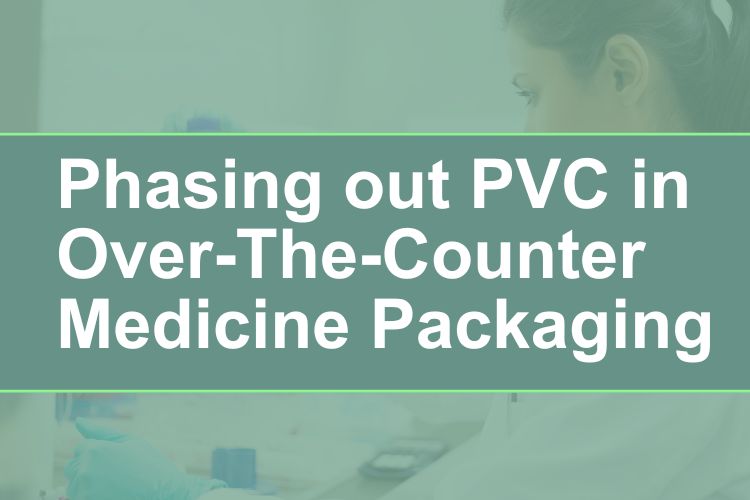When it comes to protecting medicines and ensuring their efficacy, polyvinyl chloride (PVC) has been a common choice for over-the-counter (OTC) medicine packaging and blister packs since the 1960s in the UK and Europe due to its protective properties, its thermoformability, and its cost-effectiveness. However, recent trends indicate a potential shift away from PVC, driven by environmental concerns and recycling challenges.
The Traditional Role of PVC in Pharmaceutical Packaging
PVC has been widely used in blister packs, bottles, and other packaging formats for medicinal packaging. Its popularity stems from its ability to provide an effective barrier against dust, moisture, light, and oxygen (provided by PVdC), which can degrade pharmaceutical products. Additionally, PVC’s relatively low cost has made it an attractive option for manufacturers.
Environmental Concerns and Recycling Difficulties
Despite its benefits, PVC has many environmental issues such as:
– Chemical and compound elements: PVC contains chlorine, dioxins and furans which can release harmful substances when incinerated.
– Additives: Plasticisers and stabilisers used in PVC can leach into the environment.
– Recycling challenges: PVC is difficult to recycle, often contaminating other plastic waste streams.
These factors have led to increased pressure from regulators, consumers, and environmental groups to find alternative packaging solutions.
The Move Towards Alternative Materials
The pharmaceutical industry in the UK and Europe is exploring several alternatives to PVC:
– Polyethylene Terephthalate (PET): PET offers good barrier properties and is widely recyclable.
– Polypropylene (PP): PP provides durability and chemical resistance, making it suitable for various packaging applications.
– Polyester (PE): PE offers versatility in pharmaceutical packaging, providing a balance of strength, flexibility, and moisture resistance which is particularly useful for blister packs and sachets.
– Mono-material solutions: Packaging made from a single type of plastic can be easier to recycle.
Challenges in Moving Away from PVC
While the industry recognises the need for change, the transition presents several challenges:
– Regulatory compliance: New packaging must meet stringent health and safety standards.
– Cost considerations: Alternative materials may be more expensive, impacting product pricing.
– Manufacturing processes: Adapting production lines for new materials requires investment and time.
– Machinery Upgrades: Additional costs are required to upgrade machinery to be able to process new materials.
– Reduced Operational Efficiency: Switching to non-PVC materials can double the time it takes to pack the product.
Research and Innovation
– Current research is focusing on developing sustainable packaging solutions that maintain the necessary protective properties. Packaging derived from renewable resources or bio-based material is being explored
– Efforts are also underway to enhance the recyclability of pharmaceutical packaging through improved recycling technologies
– Smart packaging innovation is being explored, with new designs aimed to reduce material usage while maintaining product integrity.
Regulatory Landscape
In the UK and Europe, regulations are evolving to address environmental concerns. The European Union’s Circular Economy Action Plan emphasises the need for all packaging to be reusable or recyclable by 2030. The UK Plastics Pact aims to eliminate problematic plastics and increase the use of recycled content in packaging. These regulatory frameworks are driving the pharmaceutical industry to reassess its packaging strategies and invest in more sustainable alternatives.
“The challenges presented by OTC packaging are numerous and wide ranging,” says Duncan Flack, CiPPPA Chairman, “CiPPPA is coordinating the collective ambitions of a large proportion of the OTC and pharmaceutical industries with the aim of launching nationwide take back and recycling schemes that could improve the end of life of OTC packaging formats like blister packs.”
While environmental and contamination concerns are driving the phasing out of PVC in over-the-counter medicine packaging, the industry must balance these with the need for safe, effective, and affordable packaging solutions. As research continues and regulations evolve, the coming years are likely to see further innovations in sustainable pharmaceutical packaging.

